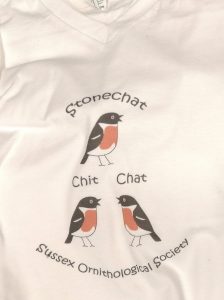Now is the ideal time to sign up to take part in the BTO Breeding Bird Survey (BBS) for this breeding season and to arrange to come along to an informal practice session with other volunteers.
This national monitoring scheme is administered by the BTO and jointly funded by the BTO, JNCC and RSPB. It has been running since 1994 and its primary aim is to provide population trends for common and widespread bird species in the UK. Population trends for Sussex are also produced and published in the Sussex Bird Report.
Survey plots are randomly-selected 1-km squares of the National Grid, and the same squares are surveyed each year. Volunteers visit their squares three times each year during the breeding season, once to record simple habitat data, and twice to walk a fixed route, recording birds seen and heard. There are more than 150 BBS squares across Sussex, covering every type of habitat, and new volunteers are always needed.
Volunteers must be able to recognise common and widespread birds, but previous experience of survey work is not necessary. Help and support from experienced volunteers can be arranged if required, and some informal group practice sessions are planned for late March 2020, to which new volunteers will be invited.
The BBS squares (asterisks indicate priority squares that have been surveyed before) in Sussex which currently need volunteers for the 2020 breeding season (updated 19/3/2020) are:
SU7802 Cobnor Point
SU8624 Tote Hill near Midhurst
SU9017 Heyshott*
SU9113 near East Dean*
SU9216 Graffham Down*
SU9228 near Blackdown*
SZ7996 East Wittering*
TQ0124 near Kirdford*
TQ1531 Broadbridge Heath
TQ1904 Lancing*
TQ2631 Tilgate Forest*
TQ2828 Staplefield*
TQ3304 Brighton Whitehawk
TQ3916 near South Chailey*
TQ4002 Telscombe*
TQ4313 Upper Wellingham*
TQ4738 near Blackham*
TQ4800 Seaford*
TQ4817 near Isfield*
TQ4900 Seaford*
TQ5228 near Crowborough*
TQ5435 near Eridge Station*
TQ5514 near Chiddingly
TQ5738 Tunbridge Wells*
TQ6419 Earl’s Down*
TQ7028 near Hurst Green
TQ7311 near Bexhill*
TQ8013 Baldslow*
TQ8413 near Three Oaks
TQ8518 Udimore*
TQ8613 Guestling Green
TQ8722 Peasmarsh*
For further information, please contact Helen Crabtree, 01444 441687, hcrabtree@gmail.com.
